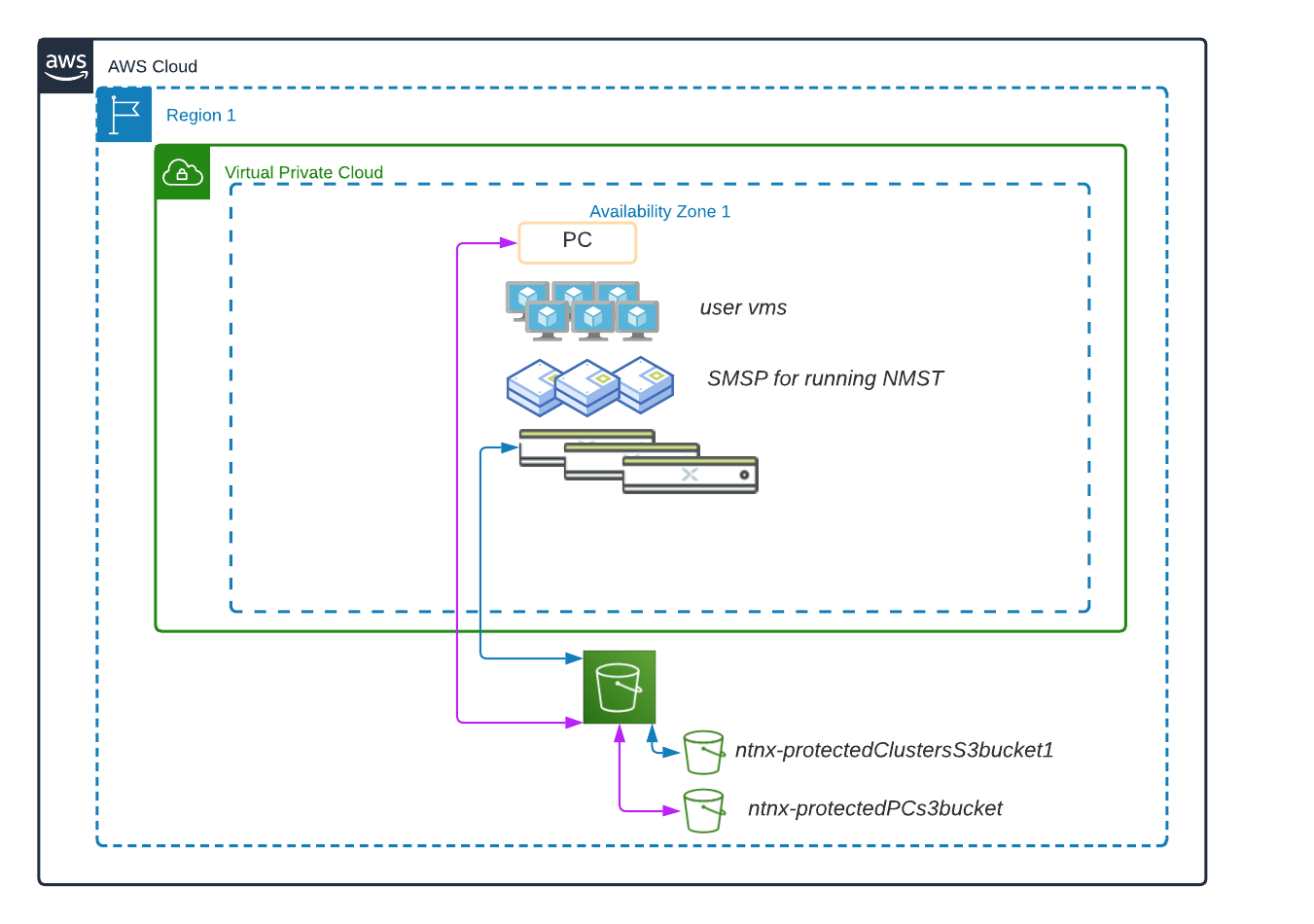Native backup for Nutanix Cloud Clusters (NC2) comes to AWS
By Dwayne Lessner, Principal Technical Marketing Engineer, Nutanix
Migrating your application to the public cloud is only one piece of the puzzle. You still must provide all of the same Day 2 operations as you would if the application was on-premises. With the joy of moving the application into the cloud, arranging for backup sometimes is overlooked - until it’s too late. The Nutanix Cluster Protect™ solution provides a native option for backing up the Nutanix Cloud Clusters™ (NC2) platform running on AWS to S3 buckets, including user data as well as the Nutanix Prism Central™ (PC)controller and its configuration data. Nutanix Cluster Protec backs up all user-created virtual machines (VMs) and volume groups on the cluster.
As customers migrate from on-premises to the cloud they can rest assured there is another copy of their applications and data in the event of an AWS Availability Zone (AZ) failure. Nutanix already provides native protection for localized failures at the node and rack level, so Cluster Protect extends that protection to the cluster’s AZ. Since this service is integrated, high-performance applications are barely impacted by the backup process as native AOS snapshots are being used to send the backup directly to S3.

Two Nutanix services are used to help deliver Cluster Protect:
- Prism Central Disaster Recovery is responsible for backing up the Prism Central data. Instead of backing up to an AOS™ container, you can now supply a new S3 bucket to point the backup to.
- A new service, Nutanix Multicloud Snapshot Technology™ (NMST), replicates native Nutanix AOS snapshots to object storage. In the Cluster Protect design, the customer supplies a second new S3 bucket in AWS to send all the protected clusters snapshots to the same S3 bucket. The Cloud Snapshot Engine runs on the Prism Central instance in AWS.
A high-level overview of the process for protecting your cluster(s) and PC in AWS is:
- Deploy a one or three node PC in AWS.
- Create two S3 Buckets, one for PC and one for your cloud clusters.
- Enable PC Protection.
- Deploy NMST.
- Protect your AWS cloud clusters.
Both the PC and AOS snapshots are taken every hour and we retain up to two snapshots in S3. All of the user-created VMs and volume groups on the clusters are protected using a category with Nutanix disaster recovery (DR). A service watches for create/delete events and assigns them to a Cluster Protect category.
A high overview of PC and a cluster(s) recovery on AWS is:
- An NC2 console automatically deploys a new NC2 Cluster during the recovery process.
- Add back your PC subnet and any user VM networks to your recreated cloud cluster.
- Recover PC configuration from the S3 bucket.
- Register PC with the recovered cluster.
- Recover Cloud Snapshot Engine.
- Create a recovery plan.
- Execute the recovery plan from PC.
Once the NMST is recovered, the recovery plans can be restored to Prism Central. The recovery plan will have all your VMs that need to be restored. Simply run the recovery plan and you're back in business. Using Nutanix DR with this new service allows administrators to easily recover when disaster strikes.
Start your 30-day free trial of Nutanix Cloud Clusters (NC2) and test out this new feature for yourself.
© 2023 Nutanix, Inc. All rights reserved. Nutanix, the Nutanix logo and all Nutanix product, feature and service names mentioned herein are registered trademarks or trademarks of Nutanix, Inc. in the United States and other countries. Other brand names mentioned herein are for identification purposes only and may be the trademarks of their respective holder(s). This post may contain links to external websites that are not part of Nutanix.com. Nutanix does not control these sites and disclaims all responsibility for the content or accuracy of any external site. Our decision to link to an external site should not be considered an endorsement of any content on such a site. Certain information contained in this post may relate to or be based on studies, publications, surveys and other data obtained from third-party sources and our own internal estimates and research. While we believe these third-party studies, publications, surveys and other data are reliable as of the date of this post, they have not independently verified, and we make no representation as to the adequacy, fairness, accuracy, or completeness of any information obtained from third-party sources.
This post may contain express and implied forward-looking statements, which are not historical facts and are instead based on our current expectations, estimates and beliefs. The accuracy of such statements involves risks and uncertainties and depends upon future events, including those that may be beyond our control, and actual results may differ materially and adversely from those anticipated or implied by such statements. Any forward-looking statements included herein speak only as of the date hereof and, except as required by law, we assume no obligation to update or otherwise revise any of such forward-looking statements to reflect subsequent events or circumstances